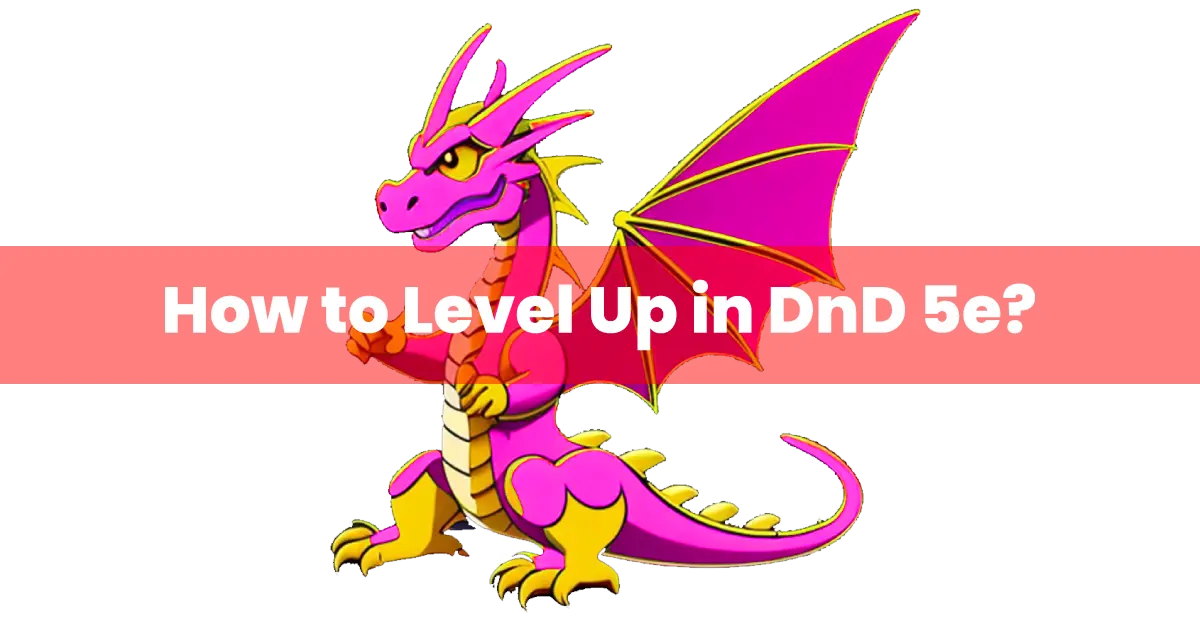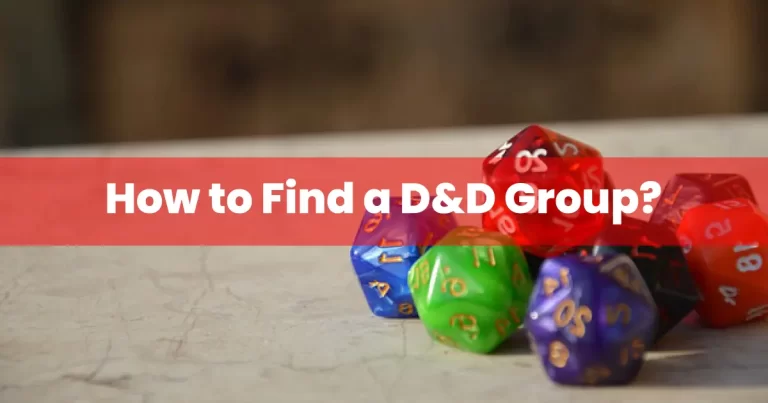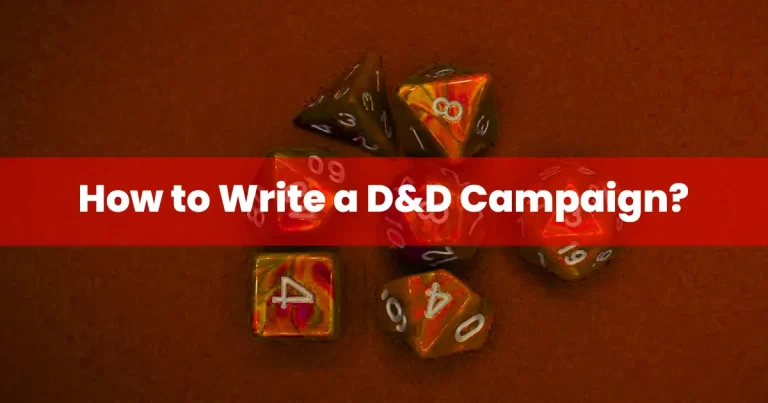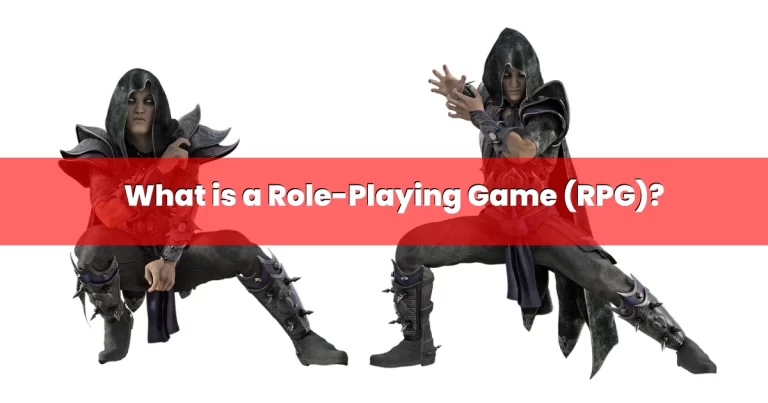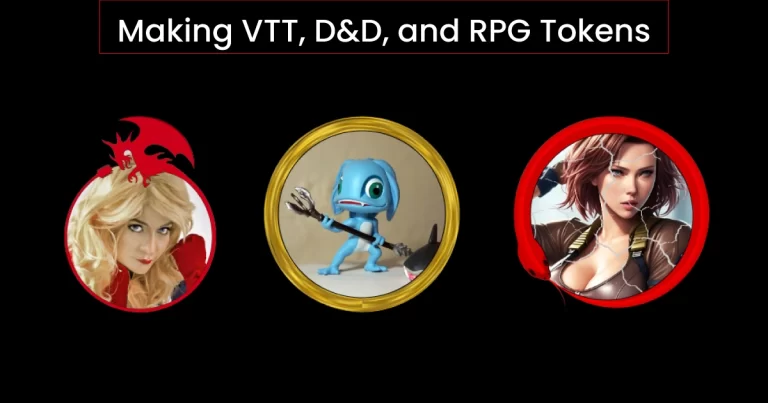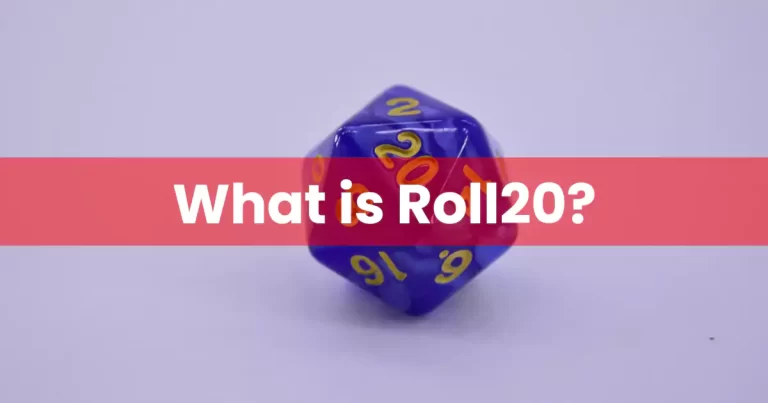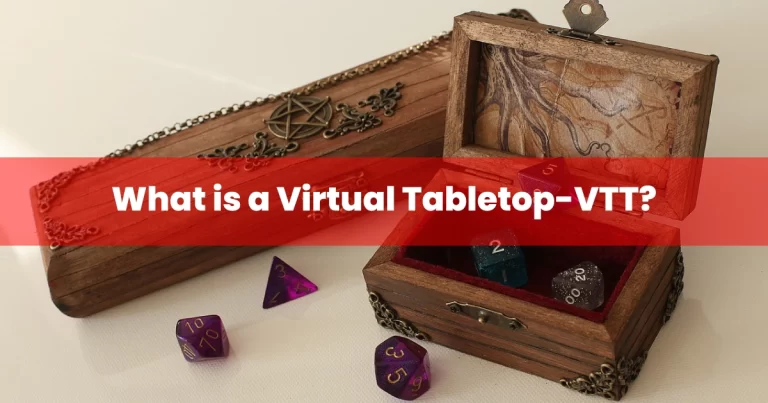How to Level Up in DnD 5e? A Comprehensive Guide
Leveling up in DnD 5e may seem scary at first, but it’s actually pretty cool! It’s like your character is growing and getting stronger. You have to use tables and roll dice, which can be like a fun puzzle. As you learn more about leveling up, you’ll see that it’s a chance to make your character even better and do amazing things. We made a guide to help you understand everything about leveling up in 5e DnD. It will teach you about experience points and how they make your character stronger. With this guide, you’ll have an easier time making your character super awesome!
Checklist
Before going in detail, please have a look at our extensive checklist on how to level up in DnD 5e.
- Hit Points Increase: Roll or take the average result of your class’s hit die, then add your Constitution modifier
- Gain an Additional Hit Die: You get an extra hit die, giving you more health and resilience to survive battles and challenges.
- Check for New Class Features: Refer to your class table in the Player’s Handbook to see what new abilities, powers, or improvements you gain at this level.
- Ability Score Improvement (ASI): Occurs at levels 4, 8, 12, 16, and 19 for most classes. Rogues have an additional ASI at level 10, and Fighters at levels 8 and 14. You can choose to increase your ability scores or take a Feat.
- Proficiency Bonus Increase: Occurs at character levels 5, 9, 13, and 17. Adjust your skill and save throw modifiers accordingly.
- Modifier Adjustments: Update modifiers affected by ASI changes, such as attack bonus, damage bonus, initiative, armor class, passive perception, spell attack bonus, or spell save DC. Skill modifiers related to the increased Ability Score should also be adjusted.
- Check for Level-dependent Racial Features: Some racial features may activate or increase in power as you level up.
- Multiclass Consideration: If desired, review the rules for multiclassing on page 164 of the Player’s Handbook.
- Spellcaster: Add New Spell Slots: Casters gain additional and higher-leveled spell slots as they level up.
- Spellcaster: Learn New Spells: If your class uses the Spells Known mechanic or gains new spells through a subclass, check the relevant sources for spell selection at this level.
- Spellcaster: Replace One Spell Known: If you use the Spells Known mechanic, you can swap out one known spell with another appropriate spell from your class’s spell list.
- Spellcaster: Replace a Cantrip: At levels where you gain an ASI, you can replace one of your class’s cantrips with another cantrip from the same class.
- Spellcaster: Increase Number of Prepared Spells: Calculate the number of prepared spells using the formula: (Class Level / 2) + Spellcasting Ability Modifier.
- Spellcaster: Boost Damaging Cantrips: At character levels 5, 11, and 17, your damaging cantrips become more powerful.
- Additional Class-specific Features: Certain classes may have unique features that activate at specific levels. Refer to your class description for details.
- Subclass Features: Subclasses often grant additional features or enhancements at specific levels. Check your subclass details for any updates.
- Extra Attack: Some classes gain the ability to make extra attacks when they reach certain levels. Refer to your class’s progression table for this information.
- Metamagic Options (Sorcerer): Sorcerers unlock new Metamagic options at certain levels, expanding their spellcasting versatility.
- Ki Points Increase (Monk): Monks gain more Ki points as they level up, allowing for additional class-specific abilities.
- Wild Shape Improvements (Druid): Druids’ Wild Shape ability becomes more potent, allowing transformations into more powerful creatures.
- Improved Sneak Attack (Rogue): Rogues’ Sneak Attack damage increases at specific levels, dealing greater damage to their foes.
- Channel Divinity Options (Cleric, Paladin): Certain divine classes gain additional Channel Divinity options as they progress.
- Extra Cantrips (Warlock): Warlocks learn additional cantrips at certain levels, expanding their spellcasting repertoire.
- Mystic Arcanum (Warlock): Warlocks gain access to higher-level spells known as Mystic Arcanum as they level up.
- Indomitable (Fighter): Fighters gain the Indomitable feature, allowing them to reroll failed saving throws, at higher levels.
- Extra Attack and Battle Magic (Eldritch Knight): Eldritch Knights gain the Extra Attack feature and the ability to cast spells as a bonus action when they reach certain levels.
- Bardic Inspiration Improvement (Bard): Bards’ Bardic Inspiration dice increase in size as they level up, granting greater bonuses to their allies.
- Rage Damage Increase (Barbarian): Barbarians’ Rage damage bonus improves as they gain levels, dealing more damage while in a rage.
- Divine Smite Damage Increase (Paladin): Paladins’ Divine Smite ability deals more radiant damage as they level up.
- Sorcery Points Increase (Sorcerer): Sorcerers gain additional Sorcery Points, enhancing their metamagic options and spellcasting flexibility.
DnD 5e Level Up Process: Explained
Leveling up is an essential process to enhance your character’s strength and abilities in a game. It involves increasing your level and choosing a class to progress in
Increasing Your Level
To begin leveling up, you must raise your character’s level. There are three distinct methods for achieving this, which we will discuss in detail later. Once you level up, you typically have the option to advance in your main class, although it’s also possible to gain a level in another class if your ability score permits it.
Completing the Level Up Process
Once you successfully complete the leveling up process, you can follow these steps in any order that suits you, ensuring that you don’t miss any crucial updates. However, the challenge lies in actually gaining a level, which is typically determined by your DM at the beginning of the game.
Methods of Leveling Up
There are two primary methods for leveling up: Expert leveling and Milestone leveling.
Expert Leveling
Expert leveling involves earning experience points by overcoming challenges, defeating enemies, reaching milestones, or completing tasks set by the Dungeon Master. By accumulating a specific amount of experience points, as indicated in a table, you can level up your character.
Milestone Leveling
Milestone leveling occurs when significant events take place in the game, as determined by the DM. Leveling up is triggered by accomplishing noteworthy milestones in the storyline. This method can be combined with Expert leveling by awarding additional experience points for reaching specific milestones.
3 Difficult Steps During the 5e Leveling Process
Balancing Encounter Difficulty
Leveling up in can be a bit tricky, especially when it comes to facing challenges. The DM has to make sure that the challenges you face are not too easy or too hard. It’s like finding the perfect balance. If the challenges are too easy, it won’t feel exciting or special when you complete them. But if they’re too hard, you might have a tough time and might even lose the game! So, the DM and the players have to work together to find the right level of challenge that is fun and enjoyable for everyone. It’s like dancing to a special tune where you have to find the right steps!
Decision-Making and Character Development
When you level up 5th edition, you get to make some important choices that affect how your character grows. You can choose new abilities, spells, or special features for your character. It might feel a little overwhelming because these choices can have a big impact on how your character plays the game. That’s why it’s important to think about your character’s strengths, weaknesses, and what they want to achieve in the game. Take your time to understand your character better and think about what would be the best choice for them. You can also talk to your DM and your friends who are playing with you. They can help you make a decision that fits well with your character’s story and how you want to play the game. It’s like making a plan for your character’s future adventures and making sure they have the right tools and abilities to succeed!
Roleplaying and Incorporating New Abilities
While leveling up 5e, you learn new cool things like special skills, magic spells, and abilities. But it can be a bit tricky to use them in the game. Suddenly having these powerful abilities might change how you play and interact with the game world. This can be especially scary for new players who are still figuring out their character’s personality and behavior. Don’t worry, though! It’s important to take your time and understand how your new abilities work. Think about how your character would use them in different situations. It’s like getting used to a new superpower! Remember to stay true to your character’s personality and story while embracing their growth and new powers.
Must Happening Post-Level Up Events
When you level up DnD 5th edition, several things happen that enhance your character’s abilities and progression. Here are 15 key events:
1. Hit Points Increase: Your character gains additional hit points, representing their increased durability and resilience in combat.
2. Ability Score Improvement: You can choose to increase one or more of your ability scores, making your character stronger, more agile, more intelligent, or improving other traits.
3. Class Features: Each class has specific features that are unlocked or improved at certain levels. These features can include new abilities, spells, fighting styles, or other class-specific bonuses.
4. Spell Slots: If your character is a spellcaster, you gain new spell slots, which allow you to cast a wider range of spells.
5. Spells Known: Spellcasting classes may learn new spells or add spells to their known spell list, expanding their magical repertoire.
6. Cantrips Known: Some spellcasters gain additional cantrips, which are simple spells that can be cast repeatedly without expending a spell slot.
7. Extra Attack: Martial classes, such as fighters and barbarians, gain the ability to make additional attacks when they take the Attack action, increasing their combat prowess.
8. Proficiency Bonus Increase: Your character’s proficiency bonus, which is added to certain rolls, such as attack rolls and saving throws, increases at certain levels, reflecting their growing expertise.
9. Class Archetype Features: At certain levels, you unlock additional features or abilities specific to your chosen subclass or archetype within your class.
10. Ability Score Improvement (Part 2): At higher levels, you gain additional opportunities to improve your ability scores or choose feats, further customizing your character.
11. Feats: Feats are special abilities or bonuses that can be chosen instead of increasing ability scores. They grant unique advantages and enhance your character’s capabilities.
12. Additional Hit Dice: You gain additional hit dice, which can be used during short rests to regain hit points, providing more resources to sustain your character during adventures.
13. Saving Throw Proficiencies: Some classes grant additional saving throw proficiencies at certain levels, making your character more adept at resisting certain types of threats.
14. Subclass-specific Features: Subclasses, which are chosen at earlier levels, provide additional unique features that are unlocked or improved upon reaching higher levels, further defining your character’s specialization.
15. Epic Boons (at higher levels): In extended campaigns or high-level play, Dungeon Masters may award epic boons, granting your character extraordinary abilities, immunities, or special powers beyond normal progression.
DnD 5e XP Level Up System
Here is an easy table to understand the DnD leveling system.
| Level | Experience Points |
|---|---|
| 1 | 0 |
| 2 | 300 |
| 3 | 900 |
| 4 | 2700 |
| 5 | 6500 |
| 6 | 14000 |
| 7 | 27000 |
| 8 | 34000 |
| 9 | 48000 |
| 10 | 64000 |
| 11 | 85000 |
| 12 | 100000 |
| 13 | 120000 |
| 14 | 140000 |
| 15 | 165000 |
| 16 | 195000 |
| 17 | 225000 |
| 18 | 265000 |
| 19 | 305000 |
| 20 | 355000 |
Post-Level Up Things
When you level up, several things might happen that are not guaranteed but can be chosen or determined based on certain factors. Here are some of the things that might happen when you level up:
Multiclassing
You have the option to multiclass, which means you can take a level in a different class instead of advancing in your current class. Multiclassing allows you to mix abilities and features from multiple classes, providing more versatility and customization to your character. However, multiclassing has specific prerequisites and rules that need to be followed.
Replacing Spells Known
If you are a spellcasting class with a limited number of spells known, such as a Bard or Sorcerer, you can choose to replace one of your existing spells known with a different spell from your class’s spell list. This allows you to adapt your spell repertoire to better suit your evolving character concept or current needs.
Replacing Cantrips Known
Some classes, such as Bards, Clerics, Druids, Sorcerers, and Warlocks, can choose to replace one of their known cantrips with a different cantrip from their class’s spell list. This change can be made when you reach a level that grants an Ability Score Improvement, offering you the opportunity to fine-tune your character’s spellcasting abilities.
Customization through Feats
Instead of taking an Ability Score Improvement (ASI) at certain levels, you can choose a Feat. Feats are special character options that provide unique abilities and enhancements beyond the standard ASIs. Feats allow you to further specialize your character, adding flavor, tactical options, or roleplaying opportunities.
Level-Dependent Racial Features
Some racial features in DnD gain new abilities or increase in potency as your character levels up. For example, a Dragonborn’s Breath Weapon might become more powerful or have additional uses as you progress in levels. These features provide an ongoing sense of racial development and allow your character’s race to have an impact on your gameplay even at higher levels.
Class and Subclass Features
Each class and subclass in DnD has specific features that are gained at certain levels. These features can range from additional combat abilities, improved spellcasting, new skill proficiencies, or unique class mechanics. The class table in the Player’s Handbook or the relevant sourcebook for your subclass will outline when you gain these features. Subclasses often grant additional features at different levels, adding depth and specialization to your character’s abilities.
It’s important to note that not all of these things will happen every time you level up. The choices and options available to your character will depend on your class, subclass, and the specific decisions made during character creation. The DM and the rules of the campaign will also play a role in determining what options are available for your character’s advancement.
Q&As
Question:Is there a level after reaching 20th DND Level?
Answer: After reaching the 20th level in DnD 5th Edition, which is considered the pinnacle of character development, the standard ruleset does not provide explicit guidelines for further advancement. In essence, a character is considered to have reached the peak of their power within the boundaries of the core game mechanics.
However, many players and DMs choose to continue the progression of characters beyond the 20th level by employing house rules or utilizing optional content provided in supplementary rulebooks. These additional rulesets can offer extended advancement options, epic destinies, or alternative systems for character growth.
One such option is the Epic Boons system, which can be found in the Dungeon Master’s Guide. Epic Boons provide extraordinary abilities and enhancements that can further enhance a character’s capabilities beyond the limitations of traditional leveling.
Alternatively, some campaigns may incorporate epic-level content or transition into higher-level adventures, where characters face god-like beings, cosmic threats, or engage in world-altering quests. These epic-level campaigns often introduce unique challenges, powerful adversaries, and rewards appropriate for characters who have transcended mortal limitations.
It’s important to note that the rules for advancement beyond the 20th level are typically not as standardized or extensively developed as the core rules. Therefore, the specifics of what happens after 20th level can vary greatly depending on the Dungeon Master’s creativity, campaign setting, and house rules in place.

